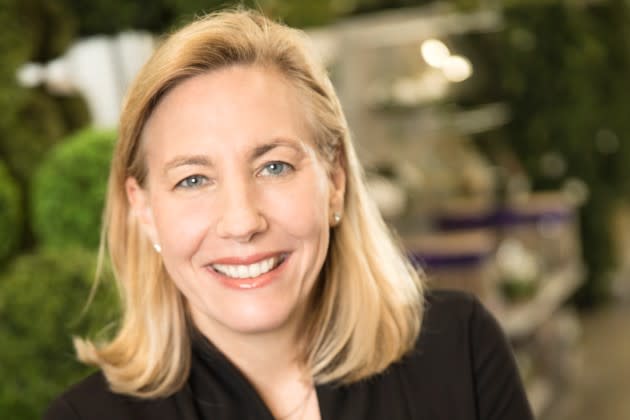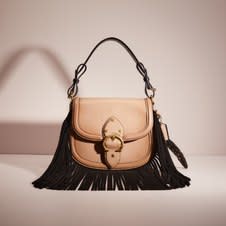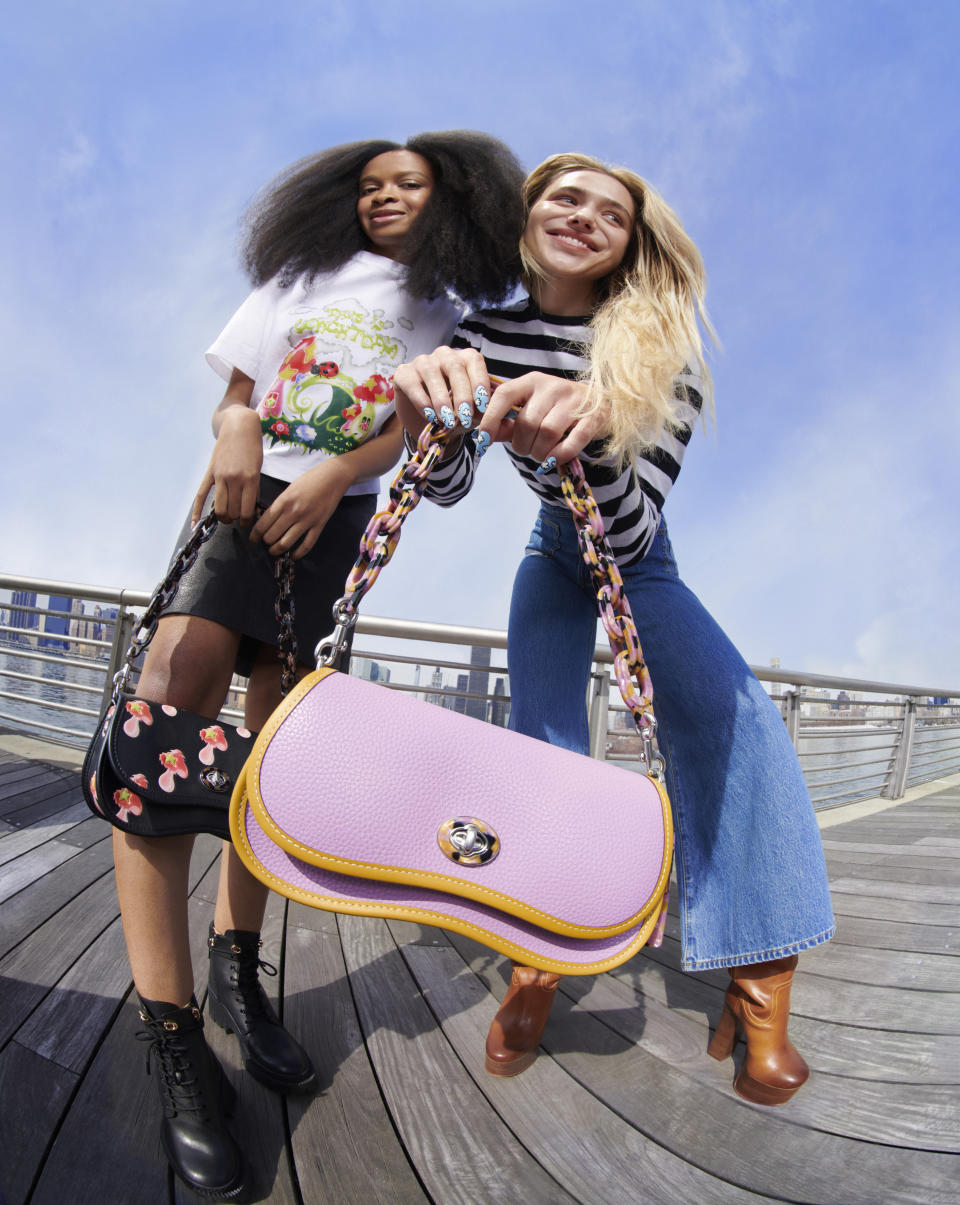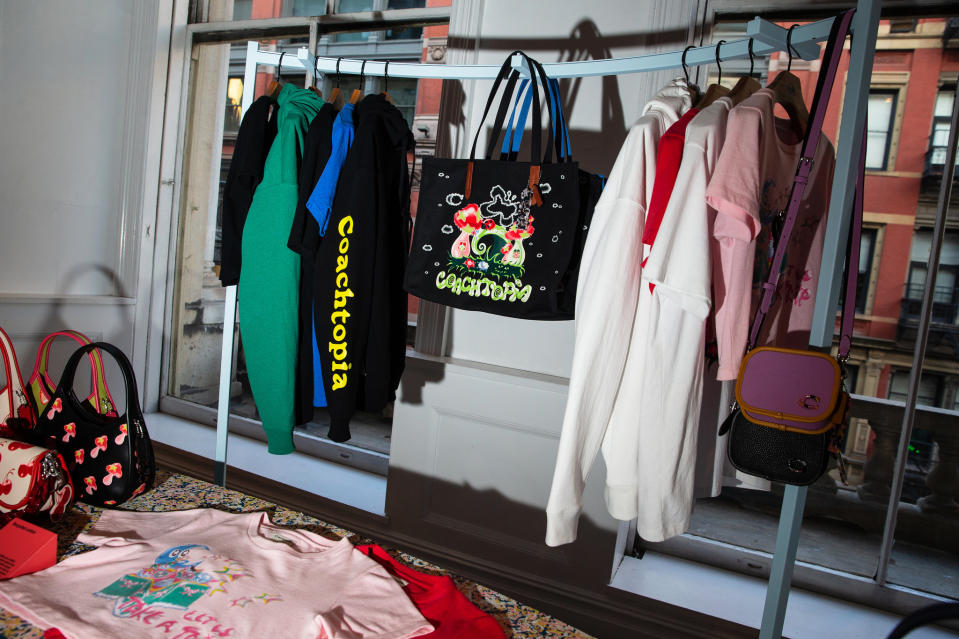Tapestry’s Joanne Crevoiserat: It Takes a Village to Scale Sustainability Practices

Sustainability is of paramount importance today and companies need to seek solutions in design, materials, manufacturing and production that not only appeal to customers but also help to improve the health of the planet.
That was the message from Joanne Crevoiserat, chief executive officer of Tapestry Inc., owner of the Coach, Kate Spade and Stuart Weitzman brands.
More from WWD
CNMI Details Milan Awards, Fashion Week, Three New Bicester Finalists
WWD Sustainability Forum: Fashion Can Embrace ESG, AI Tools to Avoid 'Heavy Volatility' In Future
“I see sustainability as a business imperative for Tapestry, for the retail industry and for the fashion industry at large,” she said. In order to build a relevant brand, companies have to be relevant to consumers. “Consumers want to engage with brands whose values reflect their own, and they want to feel good about the products that they’re purchasing,” she said.
At the same time, sustainability is key to building resilient supply chains, she added. “We’ve all seen over the last three years how disruption in our supply chains significantly impacts our business. Having traceability in our supply chains, good relationships with our suppliers and other industry partners are all part of the sustainability equation and part of driving resilience into our supply chain.”
At Tapestry, the corporation is determined to create high-quality, durable products that last. “That’s always been part of our brand ethos. And you know, our teams really embrace that idea — there’s really something special about selling someone a product that they will treasure forever,” she said.
But it’s more than just delivering products that look good. Today, they must be “both beautiful and responsible,” Crevoiserat said, pointing to the “environmentally preferred materials” the company is now using to improve the circularity of its offering.

Case in point is the Coach (Re)Loved program, which launched in 2021, and strives to create a circular ecosystem by refurbishing, reimagining and recycling used and damaged products.
To date, she said, Coach has “given a second life” to 20,000 products through its repairs and refurbishment efforts. “We’ve kept 250,000 products out of landfills and in circulation.”
At the same time, the company is working closely with its target consumers to better understand their evolving needs and values. “Sustainability and feeling good about the products they’re purchasing is important to consumers today,” she said. “And they also want to connect to and be part of the creation process.”
This is evident with Coachtopia, a circular subbrand of bags, accessories, apparel and footwear made with recycled, repurposed and renewable materials in partnership with a group of Gen Z creators who “are increasingly passionate and determined to drive change,” she said.
With this collection, and all Coach products, the company now sets out to design pieces that are easy to repair and recycle at the end of their “first life,” she said.

But this is a herculean task, and Tapestry is working with other companies to help meet its goals. Crevoiserat pointed to its recent investment into Generation Phoenix, a recycled leather provider. The company uses scraps from the production process as well as returned items from consumers and gives them a new life, she said. “Leather is important to our business, it’s a key component in almost everything we make,” she said. “But leather is also an incredibly durable material, it gets better with time, and therefore can be a very sustainable material.”
She also stressed that most leather is a byproduct of the food industry so “we’re taking material that otherwise would have been discarded, and we’re putting it to use. However, we know there’s still work that needs to be done, particularly around circularity and traceability that can improve the sustainability of the leather supply chain in aggregate.”
She said Tapestry thinks “all the way back to the farm when it comes to end-to-end sustainability of the leather supply chain.” Toward that end, the company has partnered with the World Wildlife Fund to accelerate the development of a deforestation and conversion-free certification for leather supply chains. It also supports regenerative agriculture through a partnership with the Savory Institute, which aims to ensure farming and grazing practices are employed that can actually reverse climate change.
Moving up the supply chain, Tapestry is also committed to buying 90 percent of its leather from silver and gold rated tanneries by 2025.
“And then as it relates to traceability for all of our raw materials, we’re committed to 95 percent traceability and mapping of our raw materials,” Crevoiserat continued.
In addition to leather, Tapestry is also exploring other “environmentally preferred materials,” she said, such as recycled polyester and nylon, and organic cotton.
Acknowledging that supply chains are particularly complex, especially for companies that source from multiple geographic regions, Crevoiserat said Tapestry is committed to doing what it takes to tackle the issue.
But she’s not alone — the workforce at Tapestry is also all in when it comes to enhancing sustainability efforts as evidenced by how it has embraced not only the (Re)Loved and Coachtopia programs, but also Coach Originals, where vintage styles are recreated. “That keeps our brands and our products relevant over years. And our designers are inspired by this work to keep this product in circulation,” she said.

Coachtopia, in particular, has been a real learning experience for the company, she said, and experience gleaned from designing pieces with the intention that they eventually be remade and repaired more easily is being applied to not only the entire Coach brand but Tapestry’s other businesses as well, Crevoiserat said.
With all its brands, Tapestry is committed to improve the traceability of its products. Crevoiserat said tracability is a complex issue that includes the totality of the supply chain, so the corporation is “taking on partners who can support us and help us further our ambition.”
She singled out the company’s new fulfillment center that is being built in North Las Vegas that will boast LEED certification and will also reduce the distance and time it takes to ship products to customers. “That will help us deliver for our consumers in a way that also reduces our impact on the environment. So it’s a win-win,” she said.
But while Tapestry is committed to its sustainability goals, Crevoiserat knows that it takes more than one company to make a measurable difference.
“I am very encouraged by what I’m seeing in the fashion space and beyond,” she said. “We’re not trying to solve these issues individually, but collectively, and I do think that’s part of the solution. We still have a lot of work to do but I’m encouraged that we’re moving in the right direction.”
One place where the fashion industry can have an impact is its embrace of “environmentally preferred materials,” she said. “In the last few years, this has really taken on some momentum. We’re seeing companies bring to market more innovative materials that have lower impact,” such as the recycled leather from Generation Phoenix. By testing some of these “solutions,” she believes, “we can really support them collectively and bring them to scale. And it’s at scale where we can make the most impact.”
Such collaborative efforts are working well for other industries such as food producers, she said, which are embracing more “sustainable agricultural practices.” And while it’s still in “the early innings” for fashion companies when it comes to sustainability, “we’re making important progress. As we test and learn, we can bring to scale the things that are going to make a difference in our business. At the end of the day, we’re bringing beautiful product into the world. We’re going to make the customer love it through our design and innovation.”
“We’ll continue to learn: some things will work, some things won’t, some things customers will love, some things they won’t,” she added. “The idea for us is to continue to test and learn, fail fast and really begin to scale the winners. [If we do that,] I’m optimistic that this will make a big difference for our consumers and for our planet.”
Best of WWD


